Related Research Articles
This article is about music-related events in 1833.
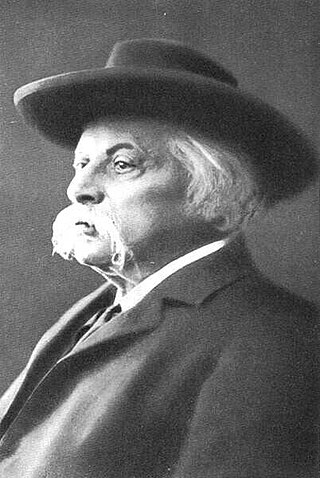
Karl Goldmark was a Hungarian-born Viennese composer.

Joseph Joachim Raff was a German-Swiss composer, pedagogue and pianist.

Franz Adolf Berwald was a Swedish Romantic composer and violinist. He made his living as an orthopedist and later as the manager of a saw mill and glass factory, and became more appreciated as a composer after his death than he had been in his lifetime.
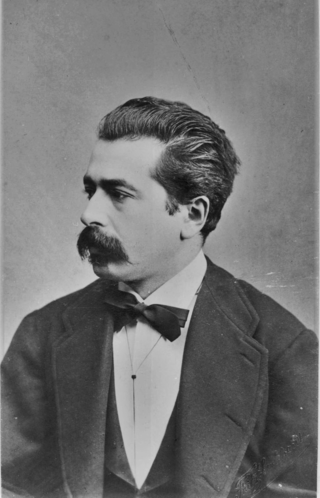
Henryk Wieniawski was a Polish virtuoso violinist, composer and pedagogue, who is regarded amongst the most distinguished violinists in history. His younger brother Józef Wieniawski and nephew Adam Tadeusz Wieniawski were also accomplished musicians, as was his daughter Régine, who became a naturalised British subject upon marrying into the peerage and wrote music under the name Poldowski.

Albert Charles Paul Marie Roussel was a French composer. He spent seven years as a midshipman, turned to music as an adult, and became one of the most prominent French composers of the interwar period. His early works were strongly influenced by the Impressionism of Debussy and Ravel, while he later turned toward neoclassicism.

Felix August Bernhard Draeseke was a composer of the "New German School" admiring Franz Liszt and Richard Wagner. He wrote compositions in most forms including eight operas and stage works, four symphonies, and much vocal and chamber music.
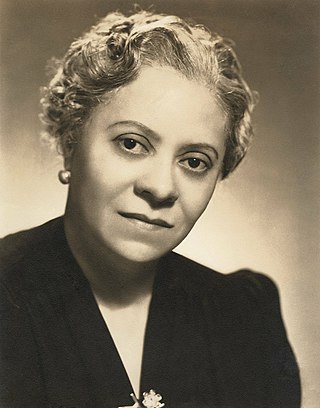
Florence Beatrice Price was an American classical composer, pianist, organist and music teacher. Born in Little Rock, Arkansas, Price was educated at the New England Conservatory of Music, and was active in Chicago from 1927 until her death in 1953. Price is noted as the first African-American woman to be recognized as a symphonic composer, and the first to have a composition played by a major orchestra. Price composed over 300 works: four symphonies, four concertos, as well as choral works, art songs, chamber music and music for solo instruments. In 2009, a substantial collection of her works and papers was found in her abandoned summer home.

Giovanni Sgambati was an Italian pianist and composer.
G-flat major is a major scale based on G♭, consisting of the pitches G♭, A♭, B♭, C♭, D♭, E♭, and F. Its key signature has six flats.

Philip Cipriani Hambly Potter was an English musician. He was a composer, pianist, conductor and teacher. After an early career as a performer and composer, he was a teacher in the Royal Academy of Music in London and was its principal from 1832 to 1859.
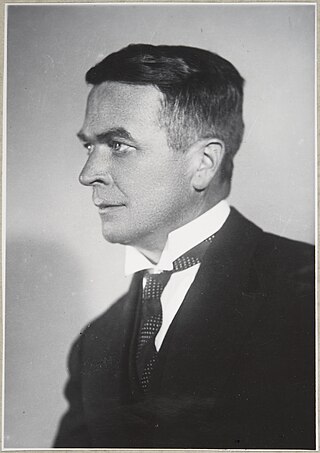
Väinö Eerikki Raitio was part of the small group of composers who appeared in the Finnish art music scene in the 1920s with a new cosmopolitan music style, very different from the dominant conservative National Romanticism.
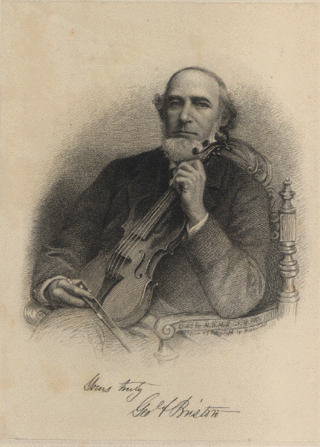
George Frederick Bristow was an American composer. He advocated American classical music rather than European pieces. He was involved in a related controversy involving William Henry Fry and the New York Philharmonic Society.

Napoléon Henri Reber was a French composer.
Friedrich Wührer was an Austrian-German pianist and piano pedagogue. He was a close associate and advocate of composer Franz Schmidt, whose music he edited and, in the case of the works for left hand alone, revised for performance with two hands; he was also a champion of the Second Viennese School and other composers of the early 20th century. His recorded legacy, however, centers on German romantic literature, particularly the music of Franz Schubert.
The Symphonic Variations, M. 46, is a work for piano and orchestra written in 1885 by César Franck. It has been described as "one of Franck's tightest and most finished works", "a superb blending of piano and orchestra", and "a flawless work and as near perfection as a human composer can hope to get in a work of this nature". It is a fine example of Franck's use of cyclic unity, with one theme growing into various others. The piano and orchestra share equally in the development of ideas. The work is in F♯ minor. Duration in performance is about fifteen minutes, and the instrumentation is piano solo and orchestra: pairs of flutes, oboes, clarinets, and bassoons; four horns; two trumpets; timpani; and strings.

Andrey Rafailovich Kasparov is an Armenian-American pianist, composer, and professor, who holds both American and Russian citizenship.
Grande Pièce Symphonique, Op.17, FWV 29, is an organ work by French composer and organist César Franck. Written in 1860–62, it is the second and, at an average duration of 25 minutes, the largest piece from Six Pièces pour Grand Orgue. It is dedicated to the composer Charles-Valentin Alkan.
Afro-Virgin Islanders, African Virgin Islanders, or Black Virgin Islanders, are people of the African diaspora who reside in the United States Virgin Islands, British Virgin Islands, and Spanish Virgin Islands, which, overall, constitutes the Virgin Islands.
References
- ↑ Catalog of Copyright Entries 1963 - Page 571 by Library of Congress, Copyright Office
- ↑ "Ernest Bloch: Chronological List". Archived from the original on 2007-02-09. Retrieved 2011-02-09.
- ↑ Symphony No. 3 in the Havergal Brian Society website
- ↑ Notes to Published Score of Symphony
- ↑ Identified by musicologist Bertil van Boer in program notes for the Naxos recording as one of only two C-sharp minor symphonies written in the 18th century.
- ↑ Glenn C. Kruspe | The Canadian Encyclopedia
- ↑ Lemba, Artur | Estonian Music Information Centre
- ↑ Mahler objected to this key assignment, preferring none at all.
- ↑ Nikolai Myaskovsky: Works
- ↑ Vissarion Shebalin: Works Archived 2006-09-10 at the Wayback Machine
- ↑ PDF: Christine Gangelhoff; Cathleen LeGrand (2011). "Art Music by Caribbean Composers - Haiti". The International Journal of Bahamian Studies. 17. The College of Bahamas: 10. doi: 10.15362/IJBS.V17I1.152 . S2CID 191318287. or Gangelhoff, C., & LeGrand, C. (2011). Art music by Caribbean composers: Haïti. The International Journal of Bahamian Studies, 17(1), 34. Retrieved from https://journals.sfu.ca/cob/index.php/files